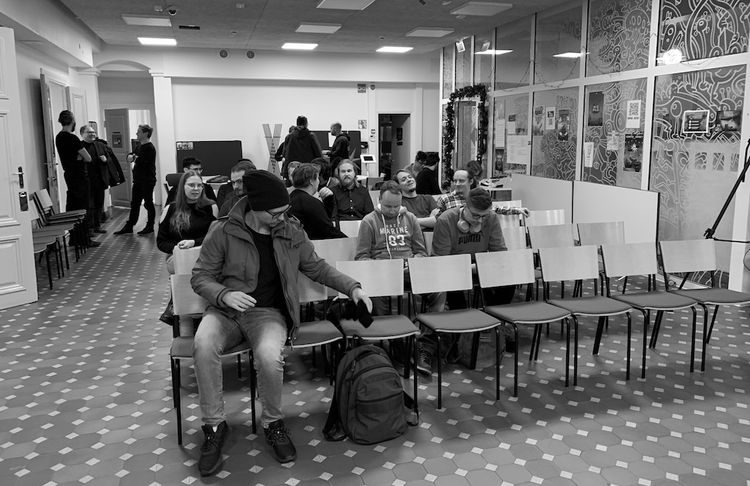EGD News #146 — Your core game isn't enough

We all know how it goes. Free-to-play developers first focus on proving retention numbers; often, they prove monetization at the very last moment. Still, the prevailing game development playbook for mobile free-to-play is that retention is crucial and that the focus on monetization comes second.
Let’s take an example: While in soft launch, you’ve proven the retention, built out the monetization, and things seem to be working. You are seeing an LTV (life-time value of the player) of $2 in two months. This meant that ROAS (return on ad spend) would hit 100% in less than two months, based on a $1.50 CPI (cost-per-install) that you are paying as you run ads for your game.
$2.00 minus $1.50, so you are pocketing $0.50 and whatever the players spend past the two months.
This strategy used to work. You’d launch the game as soon as possible and then play catch-up by working on better ad creatives, finding new sources of new players for your ads, and improving LTV by adding social features and better IAPs.
Since Apple’s IDFA deprecation in 2021, mobile user acquisition costs have increased exponentially. I’ve seen many developers struggle as they try to scale out their marketing spending:
During the game’s initial launch, you see CPI (cost-per-install) at $1.50. A few weeks later, the cost is $2.20. You’re thinking, “what is happening?”
Then a month later, it’s hitting $3. Soon it’s at $5.
To make matters worse, your game is still fresh with limited content. You’ve launched an “idea”; the game has the essential core features, and the KPIs tell you that you are OK.
Game launches like these were all fine in the heyday of mobile (pun intended) when CPIs could be managed. After the IDFA depreciation, playing this game of LTV catch-up with exponentially increasing ad spend has become almost impossible.
So what’s the plan now? As Paul Murphy said on my podcast a few years ago about mobile games:
I’m seeing a lot of companies that are, for lack of a better word, doing the same thing. The strategy is [hyper] casual, casual to mid-core, or some version of, hey, we can build a better mousetrap and raise our LTV over time.
— Paul Murphy, on EGD Podcast
I’m a big believer in mobile’s future as a gaming platform. Based on mobile gaming stats for 2021, there were over 2 billion active mobile gamers worldwide. How do we get back on track to building profitable games on mobile?
Keeping up with the catch-up
I’ve recently been advocating a more holistic approach: start by knowing more about the game you will build before you build it. Most likely, the CPI will snowball, but what else will happen?
All the games that came out on mobile from 2010 to 2015 had the first mover advantage. Besides low CPIs, players got a novel core game experience with all the games. Angry Birds was the first hit: you would swipe a finger to sling-shot a bird at the towers to take out the pigs. How cool was that? Supercell followed with novel gameplay on Hay Day, Clash of Clans, Clash Royale, etc.
The fact is that those days have been long gone.
Players haven’t felt a similar novel experience on mobile for years. Now it’s about being a core audience fan who sticks around because of social features or because your friends are playing the game.
Even if you still have a new novel gaming experience, you might rely too heavily on early retention. Many developers fall into the trap of the core game progression, taking care of the player’s appetite to retain and monetize, which is usually fine until Day 30.
What happens on Day 30 is that the content becomes repetitive. The player feels progress, but it feels a little too similar.
Suddenly, on Day 60, you only have a few percentage points of players playing. You never achieve DAU stacking, where you have countless cohorts of players playing indefinitely.
Live ops matters
The one tool for avoiding the premature death of your game, and seeing it live for over a decade, is live ops. And I don’t mean the mandatory Easter and Christmas events. I mean daily events in the game where players have a plethora of things to choose from.
The Space Ape Games live ops lecture series is a hidden gem from several years ago. I recently spoke with Simon Hade, co-founder and COO of Space Ape, and he shared these two resources:
Space Ape Live Ops Boot Camp
Space Ape Live Ops Boot Camp – Part 2
In November 2021, I did a private lecture on my thoughts and learnings from live ops. I’ve decided to share the video recording with the EGD News audience. In this video, I talk about the Space Ape model and what we did with live ops at Next Games.
Here’s the video on Youtube.
Final words
Whether you are building for free-to-play or web3, live ops have their place in getting players to enjoy the game to its fullest. It’s not a method for getting more people to spend but a way to make the players feel more engaged with your game, in the long run, eventually leading to more spending.
I believe that live ops are the only way to keep any kind of game profitable and growing.
(Photo by Sonder Quest on Unsplash)

4.5 stars with 29 ratings 🙏 Thanks to everyone who’ve shared a review on my book!
Did you know that my book is available on Amazon, as an audiobook? You can listen to the first episode by going here, or you can head on over to Amazon and get a copy of the entire book right now 🙂
Tweet of the week
Google’s new restrictions to ad placements could shake things up. It’s worth checking out Nebo’s thread on the impact to gaming on Android.
Articles worth reading
+ Merge Games: To Do Or Not To Do? — “Despite the fact that Love & Pies still cannot deliver revenues (even including projected ad income) that are at all comparable to, say, Match-3 games, our interviewees believe that this very segment has the most potential of all the Merge games. By “all the games”, we only imply titles with Merge as core gameplay and not the eclectic hybrids mentioned earlier on in the article.”
+ Metaverse is an identity, not a place — “The metaverse narrative is generally paired with attempts to establish digital reality as a fully realized alternative to our real space — endless entertainment (interconnected game platforms), digital currencies (Crypto), digital property (NFTs) and so forth. There’s a general view that all of these things must be created, in tandem, in order for the metaverse to be interesting enough to become inhabitable.”
+ Sustainable Web3 Game Economies is a Cursed Problem — “Countless NFT games will try hard to ‘balance their economies’, maintain ‘asset’ values for their NFTs through cycles. They will get lambasted, dumped and ridiculed — why? Because game resources are seen as ‘assets’, and when asset prices plunge, buyers are unhappy!”
+ What I Learned at Clubhouse — “I’ve learned a lot about building startups over the past few years, and have become much more opinionated on how to do it well. I spent the last 2 years at Clubhouse, where my learning was supercharged by the caliber of our team, the rate of growth, and the very nature of building in a new product category.”
Quote that I’ve been thinking about
Most successful people are just an anxiety disorder harnesses for productivity.
— Andrew Wilkinson
Sponsored by ZEBEDEE

By building infrastructure on top of the Bitcoin protocol, ZEBEDEE is creating interoperability between different developers and studios, allowing the entire games industry to share in the same open standard for sending and receiving value. Find out more!
Thanks for reading this week’s newsletter. Please do me a favor and share this with someone in your network who you think would benefit from the insights that I’m sharing. It would mean a lot to me 🙂
Take care, everyone! See you next Friday!
Joakim





